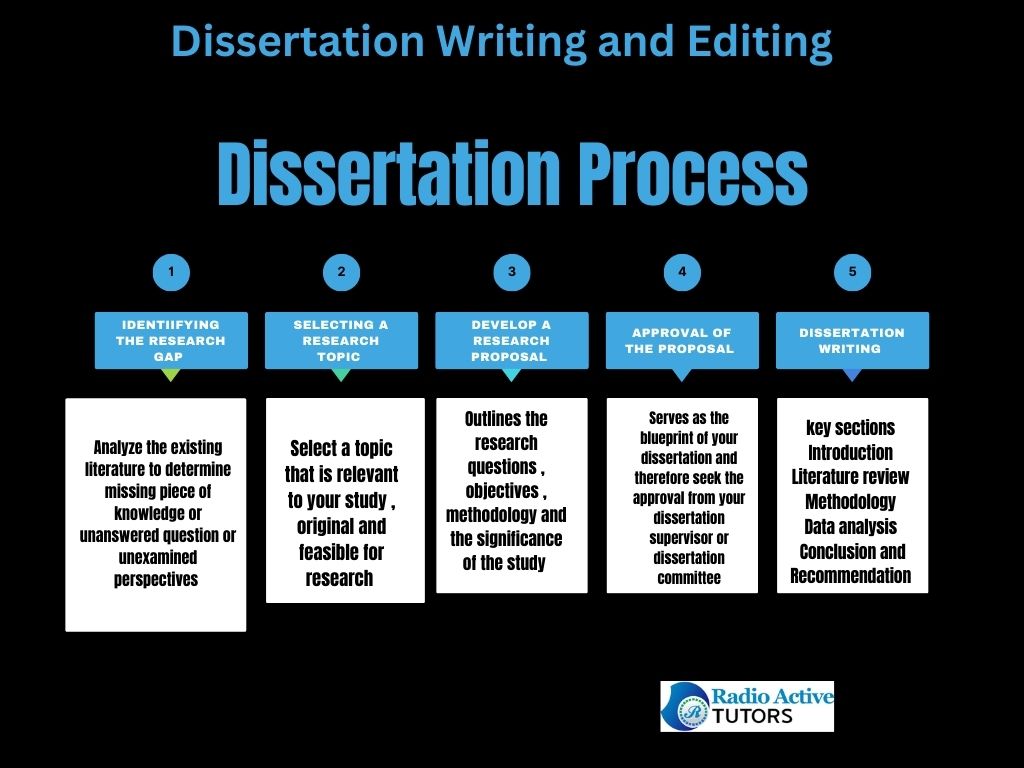Tip 1 : Understanding the Dissertation Process
Tip 2: Conducting Research
Tip 3: Writing the Dissertation
Tip 4: Editing and Proofreading
Tip 5: Seeking Feedback
Tip 6: Finalizing the Dissertation
Tip 7: Conclusion
Dissertation writing is a significant milestone in the academic journey of a student. It represents the culmination of years of research, learning, and hard work. Crafting a dissertation that is coherent, comprehensive, and scholarly requires a structured approach and meticulous attention to detail.
This essay provides a step-by-step guide to dissertation writing and editing, ensuring that your work stands out and meets the high standards of academic excellence.
Tip 1 : Understanding the Dissertation Process

The dissertation process begins with selecting a research topic. This topic should be relevant to your field of study, original, and feasible for research. Once you have a topic, the next step is to develop a research proposal.
This proposal outlines your research questions, objectives, methodology, and the significance of your study. It serves as a blueprint for your dissertation and must be approved by your academic advisor or dissertation committee.
Tip 2: Conducting Research
Conducting thorough and rigorous research is crucial. Start by reviewing existing literature to understand the current state of knowledge in your area. This will help you identify gaps that your research can fill. Check out on the 7 best ways of identifying research gap for your dissertation here!
Utilize various sources such as books, peer-reviewed journals, and reputable online databases.

Tip 3: Writing the Dissertation
Writing a dissertation involves several stages, each requiring careful planning and execution. The following sections outline the typical structure of a dissertation:
- Introduction: The introduction sets the stage for your research. It should provide background information, state the research problem, outline the objectives, and explain the significance of your study.
- Literature Review: The literature review critically examines existing research related to your topic. It identifies gaps, debates, and key findings, positioning your research within the broader academic context.
- Methodology: The methodology section details the research design, data collection methods, and analytical techniques you used. It should be clear and replicable, allowing others to follow your research process.
- Results: This section presents the findings of your research. Use tables, graphs, and charts to illustrate your data, making sure to describe and interpret the results comprehensively.
- Discussion: The discussion interprets your findings in relation to your research questions and existing literature. It should highlight the implications of your results, potential limitations, and suggestions for future research.
- Conclusion: The conclusion summarizes your research, reiterates its significance, and provides a final perspective on your findings. It should be concise and impactful.
- References: Include a comprehensive list of all sources cited in your dissertation, following the required citation style (e.g., APA, MLA, Chicago).

Tip 4: Editing and Proofreading
Editing and proofreading are critical steps in the dissertation process. They ensure that your work is polished, free of errors, and academically rigorous. Here are some key aspects to focus on during editing:
- Structural Editing: This involves reviewing the overall organization of the dissertation. It ensures that each section flows logically and that the argument is coherent. Structural editing may require reordering sections, adding transitions, and ensuring that the introduction and conclusion align with the body of the work.
- Content Editing: At this stage, the focus is on clarity and completeness. It involves checking for consistency in arguments, verifying data accuracy, and ensuring that all research questions are addressed. Content editing also includes refining the literature review and methodology sections.
- Copy Editing: This involves a detailed review of grammar, punctuation, spelling, and syntax. Copy editing ensures that the writing is clear and professional, free from typos and grammatical errors.
- Proofreading: The final stage of editing, proofreading focuses on catching any remaining errors and ensuring formatting consistency. It involves checking headings, citations, and references to ensure they adhere to the required style guide (e.g., APA, MLA).
Tip 5: Seeking Feedback

Before finalizing your dissertation, seek feedback from peers, advisors, or professional editors. Constructive feedback can provide new perspectives and identify areas for improvement that you might have overlooked.
Tip 6: Finalizing the Dissertation
After incorporating feedback and making necessary revisions, conduct a final review of your dissertation. Ensure that all components are complete, properly formatted, and free of errors. Submit your dissertation in accordance with your institution’s guidelines, including any required documentation such as abstracts, acknowledgments, and appendices.
Tip 7: Conclusion
Writing and editing a dissertation is a demanding but rewarding process. It requires dedication, attention to detail, and a methodical approach.
By following the steps outlined in this essay—selecting a relevant topic, conducting thorough research, writing structured sections, and meticulously editing—you can produce a high-quality dissertation that contributes significantly to your field of study. Remember, the key to success lies in planning, perseverance, and a commitment to academic excellence.
